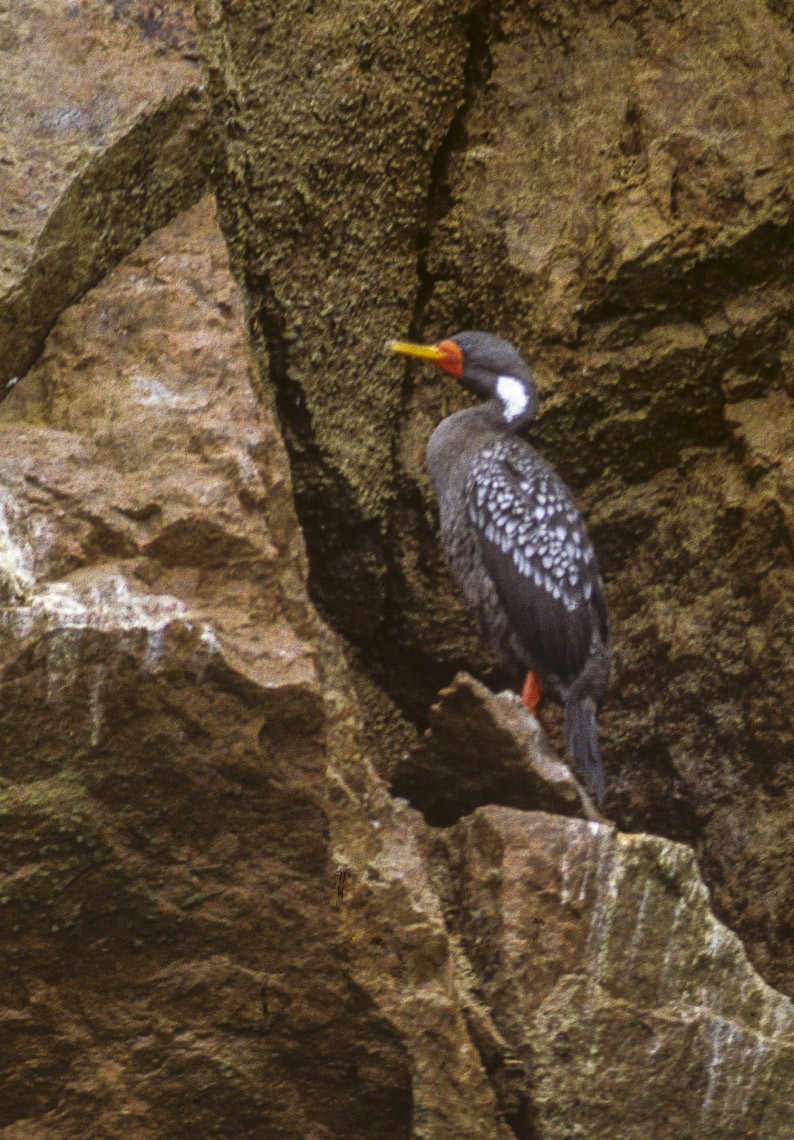Red-legged Cormorant
A species of Typical Cormorants and Shags Scientific name : Poikilocarbo gaimardi Genus : Typical Cormorants and Shags
Red-legged Cormorant, A species of Typical Cormorants and Shags
Botanical name: Poikilocarbo gaimardi
Genus: Typical Cormorants and Shags
Content
Description General Info
 Photo By Francesco Veronesi , used under CC-BY-SA-2.0 /Cropped and compressed from original
Photo By Francesco Veronesi , used under CC-BY-SA-2.0 /Cropped and compressed from original Description
The red-legged cormorant is a medium-sized seabird, with a long neck, streamlined body, webbed feet and a long, thin hooked bill. Its body length is 71–76 centimetres (28–30 in), with an average wingspan of 91 cm (36 in). It weighs 1.3–1.5 kilograms (2.9–3.3 lb). There is no sexual dimorphism between the male and female birds. The red-legged cormorant's appearance is unmistakable. Breeding adults have a smoky grey body, with a slightly paler underside. They have scattered areas of white filoplumes behind the eyes and down the neck. The wing coverts have a speckled, silvery grey appearance, followed by broad black wing tips. The tail is also black. The eyes are green, surrounded by sixteen tiny blue marks. The bill is yellow, shading to orange toward the base, the gular skin is a vibrant orange or red. The legs and feet are a striking coral red. Non-breeding adults look similar to breeding adults. They lack the white filoplumes, the wing coverts appear less silvery, but more dark grey, and the bill and gular skin are duller in colouration. Juvenile red-legged cormorants usually possess paler, brown plumage with a speckling of white around the throat. Juvenile plumage colouration can be highly variable between the Atlantic and Pacific coasts. Their eyes are grey and their bills and gular skin range from black to orange. The legs and feet can be a dull orange to a reddish black. 
Size
76 cm
Nest Placement
Cliff
Feeding Habits
Red-legged Cormorant diet primarily comprises fish such as eels and anchovies, along with planktonic crustaceans. Typically foraging alone or in small groups near their nesting sites, they dive 8-10 meters in inshore and shallow offshore waters, often during low tide to efficiently search for prey.
Habitat
Red-legged Cormorant resides along the South American Pacific coast, favoring rocky cliffs and small offshore islands for nesting. They prefer habitats that provide sheltered nesting sites on steep cliff faces with ledges, protected from predators and harsh coastal elements. For foraging, red-legged Cormorant keeps close to shore, typically within 3 km of their colonies in shallow inshore waters under 15 meters deep.
Dite type
Carnivorous
General Info
Feeding Habits
Bird food type
Distribution Area
The red-legged cormorant is native to the coast of South America. On the Pacific coast it ranges from Macabi Island, Peru to Chiloe Island, Chile. There are small isolated populations on the Atlantic coast scattered across Santa Cruz, Argentina. It rarely occurs further south than the Strait of Magellan. Red-legged cormorants nest sparsely on steep rock faces, including coastal cliffs, rocky islets, and sea caverns. They become virtually undetectable against these rocky outcrops by their speckled grey plumage, with the exception of their colourful bills and feet. They forage within inshore bodies of water and in shallow offshore waters. 
Species Status
The cormorant is considered to be Near Threatened on the IUCN Red List of Threatened Species. 
Scientific Classification
Phylum
Chordates Class
Birds Order
Gannets and Relatives Family
Cormorants Species
Red-legged Cormorant